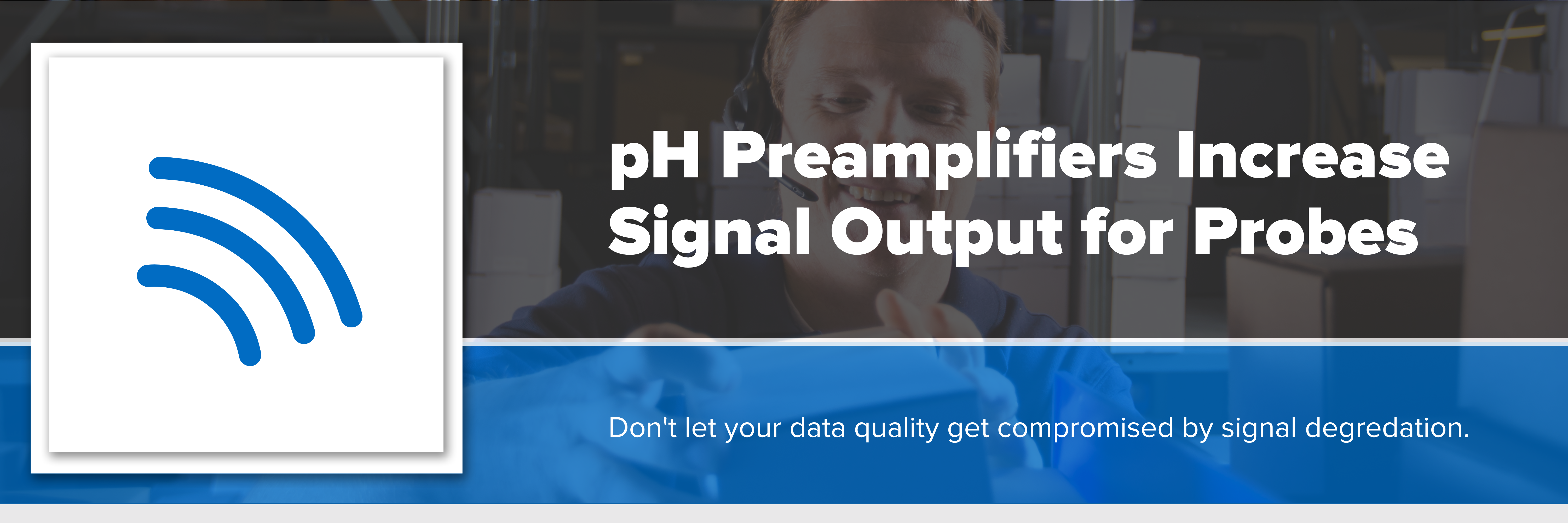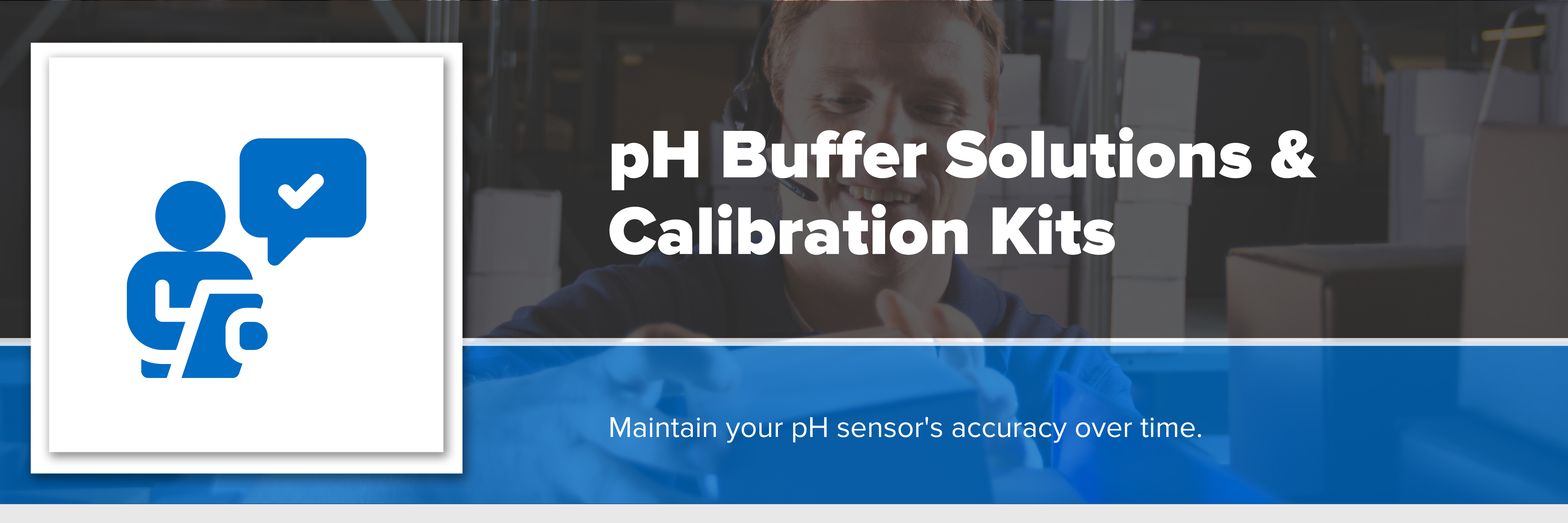3 Ways You Can Increase the Performance of pH/ORP Sensors
Accurate pH and ORP measurements enable proper treatment of process water. Having precise control over the quality, repeatability, and useful life of the pH/ORP sensors that are getting those measurements is extremely important for operators. But, taking the measurements is only part of the process. How the pH/ORP measurements get transmitted is where data quality can be severely compromised. pH preamplifiers, pH analyzers/transmitters, and pH buffer solutions/calibration kits can help increase the performance of your pH/ORP sensor. We’ll talk about how each solution can help.

pH Preamplifiers Increase Signal Output for pH/ORP Probes
For those whose process water pH measurements are being taken in places that are difficult to access, such as the top of a large water tank, signal degradation is a huge factor. A typical pH/ORP probe has a raw output of roughly 59.6 mV/pH. This means the signal is generated with virtually no current. The further the distance between the probe and the transmitter, the higher the likelihood of signal interference or degradation. Selecting a preamplifier for pH/ORP probes is a very common choice for water quality experts.
So, what does the preamplifier option for pH/ORP sensors do? An amplifier effectively boosts the signal of the probe to make it more robust, allowing the signal to travel greater distances without signal degradation. For those with remote water treatment or wastewater applications, the benefits of the signal boost are very often worth the additional investment.
Some preamplifiers go beyond just boosting the signal of the pH/ORP sensor. SMART-enabled preamplifiers add additional functionality, such as allowing automatic recognition of pH sensors by the transmitter and even storing the calibration data within the sensor itself. That extra capability allows operators to simply swap out their old sensor for a new, pre-calibrated sensor. Many sensors could be calibrated in a lab environment before being installed. This has tremendous benefits for those who require frequent calibration of their pH/ORP sensors, have their sensor located far away from their transmitter, or have their sensor in dangerous locations. It means less downtime and more reliable pH/ORP measurements.
Some manufacturers like Rosemount Analytical make junction boxes for pH/ORP sensors that don’t have an integral preamplifier so their signal quality will remain intact over longer distances so long as the proper extension cable is used. While not always necessary for every application, it is something to consider or talk to an application engineer about.

pH Transmitters & Analyzers Increase Process Control
The term “transmitter” is often used interchangeably with “analyzer,” but the two instruments actually have a few differences. Transmitters read the digital or analog signal coming from the sensor and typically require some additional controller to troubleshoot problems or control the process further. For example, the Rosemount Analytical 5081 transmitter can be used to measure pH, ORP, conductivity, and a range of other water quality parameters. It uses HART or Foundation Fieldbus communication protocols which then allow the operator to set up, configure, read process variables, and even troubleshoot problems via a PC or HART communicator.
Some additional features of more sophisticated pH transmitters like the 5081 can be very helpful, such as special explosion-proof casing that allows it to be located close to the sensor even in the harshest environments. Automatic two-point buffer calibration reduces errors and automatic temperature compensation ensures accuracy in the field. Look for these features when you purchase your next pH/ORP transmitter.
pH analyzers typically have some key additional capabilities built in which allow for more control over processes. For example, the Rosemount Analytical 1056 Analyzer allows you to calibrate your chlorine sensor, pH/ORP sensor, conductivity sensor, and even diagnose problems right from the analyzer. This is convenient since pH sensors drift as they age. pH analyzers still measure the voltage generated from something like a pH probe, but can also help determine the health of the electrode by using the slope, offset, glass impedance, and even reference impedance. The Rosemount 1056 can even compensate for changes in pH due to process temperature by using a programmable temperature coefficient.
We offer a range of pH analyzers and transmitters from top brands in the industry. You can configure online or talk to our team of over 20 application engineers with over 300 years of combined experience.

pH Buffer Solutions & Calibration Kits Help Maintain Sensor Accuracy
Ensuring the accuracy of your pH sensor is crucial for maintaining the integrity of your process water or water treatment application. pH buffer solutions and calibration kits are available to verify the accuracy of and calibrate your pH sensor. We always recommend a two-point calibration. Some pH analyzers like the aforementioned Rosemount 1056 have automatic buffer recognition to assist in the calibration process. It uses stored buffer values and their temperature curves for the most common buffer standards available worldwide. The pH analyzer will recognize the value of the buffer being measured and perform a self-stabilization check on the sensor before completing the calibration. These sorts of features ensure that your measurements in the field will be correct.

Still Need Help? Call an Engineer Today.
If this guide still leaves you wondering what type of industrial instrumentation would work best for your application, our engineers would be happy to help you. Give them a call at 1-800-884-4967. Or, you can shop for a wide range of flow industrial instrumentation from top brands and even configure your product online. We offer free lifetime tech support with every product sold.









